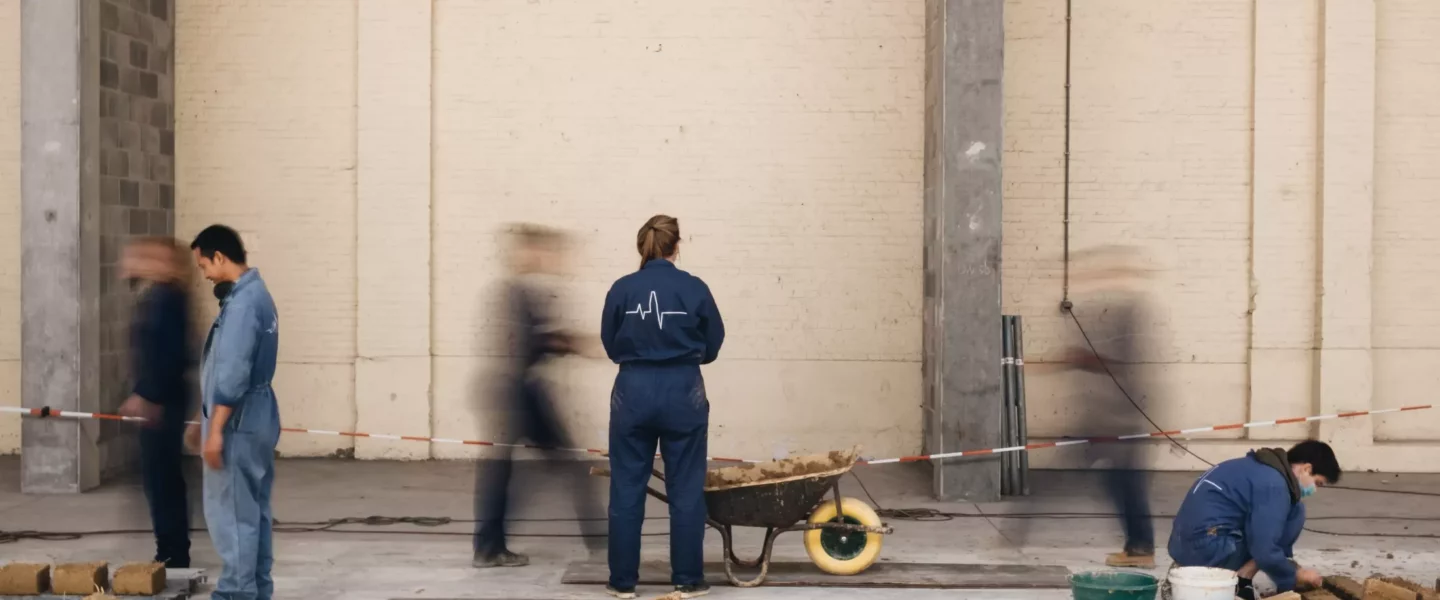
BC architects & studies & materials, The Act of Building
In autumn 2023, the open architectural lectures will take place under the title Mobile Masters. The theme brings architects and theorists to Tallinn, who analyse architecture’s flexibility and the mobile practices of architects, spatial designers and artists.
Gregor Taul, the curator of the autumn lectures, introduces the program with the following words:
In his book Mechanization Takes Command: A Contribution to Anonymous History, art historian Siegfried Giedion discusses the origin of the terms meuble and mobilier, noting the intersection between mobility and furniture. Namely, in the late Medieval period, where the entire social order was characterised by insecurity, it was impossible for any mortal being to leave their vital possessions unattended at home for any extended period of time. Thus, when nobles were not present in their residences, their palaces stood empty. Only the decorations attached to walls and ceilings were left behind, while everything else travelled along with the landlord so that it would not fall prey to looters. Giedion claims that while the building and its inseparable design elements were immeubles, all the other stuff was meubles – mobile, mööbel (the Estonian term for furniture).
Giedion wrote in such a praiseful and appreciative manner about mobility and flexibility in the year 1948 – i.e., amid the ruins of the war-ravaged Old World. As such he opposed to the totalitarian aspirations of the interwar period, when conservative and ‘immobilising’ agendas wished to erect walls that would last for a millenia. In the post-war decades, progressive European intellectuals rushed to demolish, devalue and reinterpret these physical and moral walls. Flexible nomadicity, the polar opposite of walls, became the new cultural leitmotif – and this also reflects in Giedion’s call to step on the heels of anonymous mechanisation and appreciate the medieval-style ‘on-the-move’ design principles.
Architecture stands at a significant crossroads. Ten-year-old buildings are demolished and taken to the landfill. The lifespan of an interior design project is five years at best, if that. These bleak facts do not inspire confidence in a discipline that requires so many resources in light of such a short time perspective. What does ‘better not do anything’ mean for spatial design? What might ‘mobile architecture’ refer to or who is a ‘mobile designer’? How can moving people or things be a positive spatial practice?
Keith Murray, an architect and artist; Alexander Roemer (Constructlab), who practices communal space creation; Laurens Bekemans (BC architects & studies & materials), who studies the life cycle of materials, are looking for answers to these questions.
The lectures are intended for all disciplines, not just for architecture students and professionals. All lectures in the large EKA auditorium are in English, free of charge and open to all interested parties.
Keith Murray, an architect and artist living in England whose art and design practice transcends spatial scales, will start the lecture series on September 28 at 6 p.m. He has travelled from one part of the world to another as a materials and manual crafting enthusiast. In his lecture, he talks about how movement affects the body and mind and what people take with them and leave behind.
Everyone is welcome!
SCHEDULE OF AUTUMN LECTURES
– September 28 at 6 p.m. Keith Murray (https://www.instagram.com/keithmurray5199/)
– October 26 at 6 p.m. Alexander Roemer (https://constructlab.net/)
– December 7 at 6 p.m. Laurens Bekemans (https://bc-as.org/)
Within the framework of a series of open lectures, the Department of Architecture and Urban Planning of EKA presents a dozen unique practitioners and valued theorists in the field in Tallinn every academic year.
The lecture series is supported by the Estonian Cultural Endowment.
Curated by Gregor Taul
https://www.facebook.com/EKAarhitektuur/
Additional information:
Tiina Tammet
E-post: arhitektuur@artun.ee
Tel. +372 642 0071
